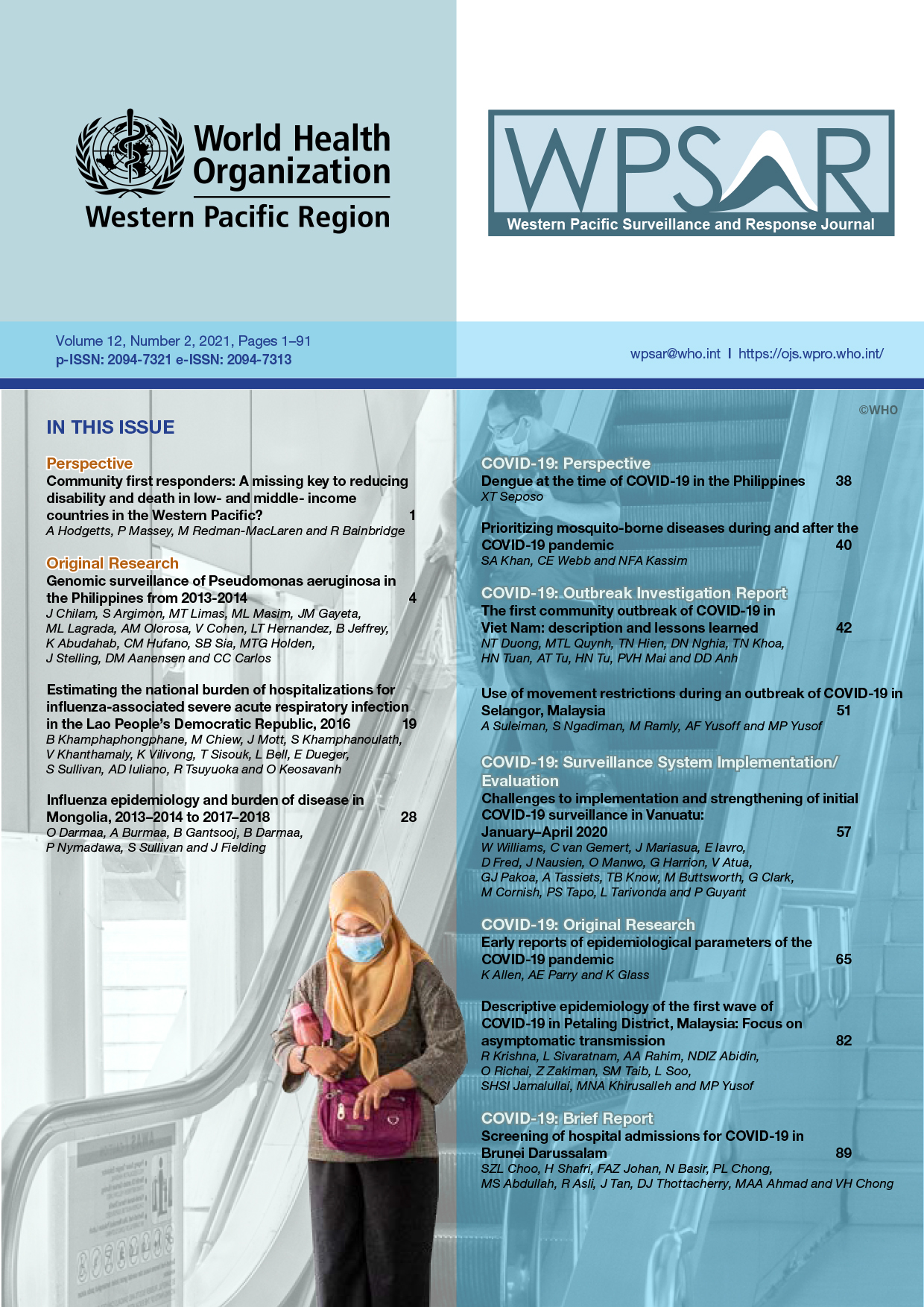Community first responders: A missing key to reducing the impact of injury and illness in low- and middle-income countries in the Western Pacific?
DOI:
https://doi.org/10.5365/wpsar.2020.11.1.003Abstract
This perspective article discusses the potential role community first responders could play in reducing injury and illness in low- and middle-income countries in the Western Pacific. Community first responders are reportedly making a difference in low- and middle-income countries in Asia and Africa in reducing injury and illness, and in disease surveillance and reporting. Efforts must be made to explore the appropriate and effective introduction of locally tailored community first responder programs in the Western Pacific.
References
World Health Organisation. Injuries in the Western Pacific. https://www.who.int/westernpacific/health-topics/injuries Accessed 06/03/2019
World Health Organisation. Human Resources for Health Country Profiles: Republic of Vanuatu. 2013.
World Health Organisation. WHO Country Cooperation Strategy for Vanuatu 2013-2017. 2012.
Sun JH, Wallis LA. The emergency first aid responder system model: using community members to assist life-threatening emergencies in violent, developing areas of need. Emerg Med J. 2012;29(8):673-8.
Olumide AO, Asuzu MC, Kale OO. Effect of First Aid Education on First Aid Knowledge and Skills of Commercial Drivers in South West Nigeria. Prehosp Disaster Med. 2015;30(6):579-85.
Murad MK, Issa DB, Mustafa FM, Hassan HO, Husum H. Prehospital trauma system reduces mortality in severe trauma: a controlled study of road traffic casualties in Iraq. Prehosp Disaster Med. 2012;27(1):36-41.
World Health Organisation. Global Status Report on Non Communicable Diseases 2010. 2011.
Johnson, J., Morris, S., Rutherford, D., Spencer, W. Treaty Village Resilience Program Annual Report 2016-2017. Reef and Rainforest Research Centre
Kuzma K, Lim AG, Kepha B, Nalitolela NE, Reynolds TA. The Tanzanian trauma patients’ prehospital experience: a qualitative interview based study. BMJ Open. 2015;5(4):e006921.
World Health Organisation. Ebola Response: What needs to happen in 2015. http://www.who.int/csr/disease/ebola/one-year-report/response-in-2015/en/ Accessed 27/01/2019
Dickman P, Kitua A, Apfel F, Lightfoot N. Kampala manifesto: Building community-based One Health approaches to disease surveillance and Response-The Ebola Legacy-Lessons from a peer-led capacity-building initiative. PLoS Negl Trop Dis. 2018:12(4):e0006292
World Health Organisation. Sustainable Development Goals. https://www.un.org/sustainabledevelopment/development-agenda/ Accessed 27/01/2019

